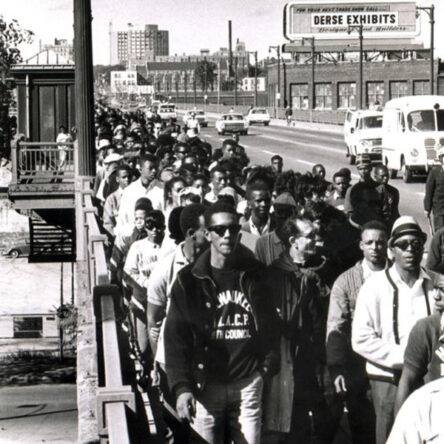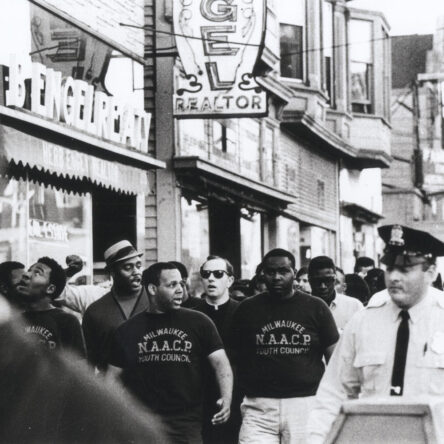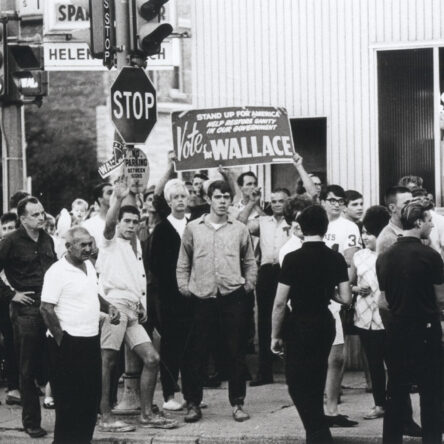March from 16th Street Bridge (Viaduct)
Since the late 1800s, viaducts in Milwaukee have been used to connect different parts of the city separated by difficult terrain. Between 1878 and 1933, eight viaducts were constructed in Milwaukee.
Originally completed in 1894 to span the Menomonee Valley, the 16th Street Bridge (Viaduct) connected the area of what is now the Marquette University campus to the predominately Polish south side. Upgrades to accommodate the streetcar lines were made in 1911 and significant renovations were made to the viaduct in 1929.
Seventy years after the 16th Street Bridge (Viaduct) was constructed, the difficult terrain separating the different parts of the city was more metaphorical than literal. Housing segregation in the city had earned the 16th Street Bridge (Viaduct) the nickname, “The Mason-Dixon Line of Milwaukee.” Starting in the late 1930s, The Home Owners’ Loan Corporation created and distributed residential security maps that served as mortgage risk evaluations. More often referred to as "redlining maps," these documents rated neighborhoods on a color scale, with red being the most “hazardous.” Milwaukeeans in redlined neighborhoods struggled to obtain mortgages and insurance, often forcing them to rent. A significant majority of Black Milwaukeeans lived in the redlined neighborhoods on the city’s north side, while the city’s south side was almost exclusively restricted to White Milwaukeeans. Additionally, zoning laws and racially restrictive covenants prevented Black Milwaukeeans from moving to "more desirable neighborhoods".
While the Civil Rights Movement of the 1960s was gaining momentum nationwide, groups in Milwaukee, like The Milwaukee United School Integration Committee (MUSIC) and The Milwaukee NAACP Youth Council, were addressing issues of racially inequality locally. At the same time, Vel R. Phillips became the first African-American and the first woman elected to The Milwaukee Common Council. Phillips, like MUSIC and the Milwaukee NAACP Youth Council, aimed to address racial inequality by proposing open housing ordinances.
With staunch opposition to open housing legislation and continued racial discrimination and inequality in the city, activists turned to organized demonstrations of protest. In the early summer of 1967, The NAACP Youth Council, led by Father James Groppi of St. Boniface Church, organized pickets outside the homes of aldermen who voted against fair housing. By August of that same year, the movement had grown and a march across the Menomonee River Valley was planned.
On August 28, 1967, Father James Groppi and the NAACP Youth Council marched south across the 16th Street Bridge (Viaduct) over the Menomonee River valley toward Kosciuszko Park. The individuals in this photo marched directly towards bricks and derogatory chants hurled at them by hundreds of White counter-protesters who sat waiting at Crazy Jim’s Auto Repair. The Milwaukee Fair Housing Marches would last for 200 days, contributing to the passage of Civil Rights laws in 1968.
CURRICULUM:
Learn more with Viewaukee curriculum for the home or classroom.
16th Street Bridge (Viaduct) Curriculum







